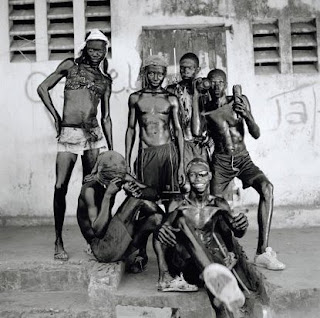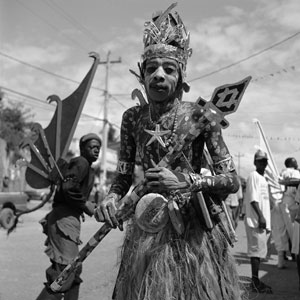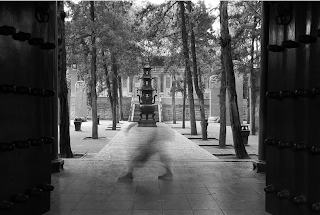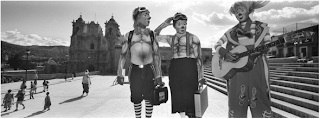Once a year for Mardi Gras, as in many places around the world, the town of Jacmel (South coast of Haiti) dresses up and goes to the streets. But what makes it so special in Jacmel is that Kanaval here is a way for the people to relive their own history - the History of the people of Haiti.
With their papier-mâché masks, charcoal and syrup painted bodies, and traditional home made costumes, the people of Jacmel transform into these grotesque, mystical, intriguing, sometimes frightening characters to retell their story and to remember. From generation to generation they keep the tradition alive. They tell about slave revolts, political history, aids, economic issues, natural disasters and of course Vodou. Rather than a parade with loud music and sexy dancing, it’s chaos and creative improvisation with groups of performers and little theatrical stories in every street corner.
Every year since 1995 Leah Gordon has taken part in this chaotic experience to give her own very personal testimony. Kanaval is the book that says it all.
Far from trying to capture the live effervescence of the streets and the perfect moment of craziness, she walks the streets with her 50 year old Rolleicord and asks the participants to stop for her in Creole. Her camera is totally manual, the process is slow and when people accept to have their portrait taken they have to be patient. In a world where everything goes fast, where snapshots of street life became so easy, Leah Gordon makes time stops around her. She sets up a little old fashion street studio. This creates a gap between her and her subject, a moment of silence and mutual examination during which the characters step out to reveal their souls. Far from all the images of Haiti published by the media since the earthquake, her photographs make us understand the humanity, the suffering and the pride of these strong people. They show the reality behind the masks.
I met Leah Gordon last week at a book-signing event at SF Camerawork. Over a glass of wine we had time to share a few words about the rain, London, Rock & Roll in the 80s, The Arcade Fire, Carnivals, her intimate passionate and nearly mystical relationship with her Rolleicord, film photography and the people of Haiti.
"... if you scrutinize reality closely enough, if in some way you really, really get to it, it becomes fantastic. You know that it really is totally fantastic that we look like this and you sometimes see that very clearly in a photograph."
- Diane Arbus (as cited in Kanaval)
Kanaval by Leah Gordon is published by Soul Jazz Publishing.You can also get the book on amazon.com.
Learn more about Leah Gordon on www.leahgordon.co.uk




























































